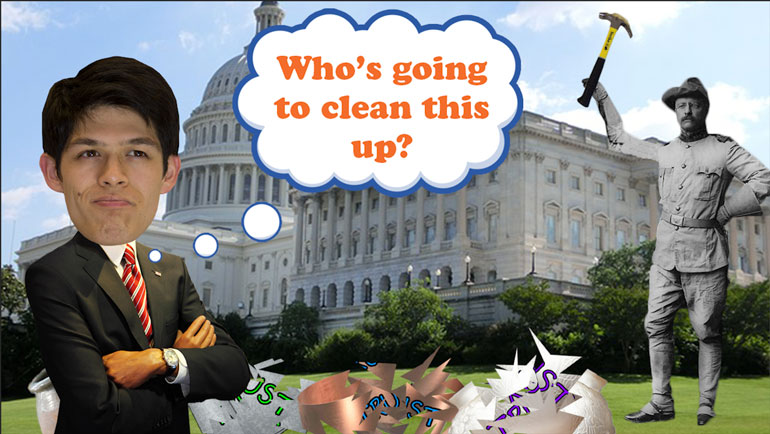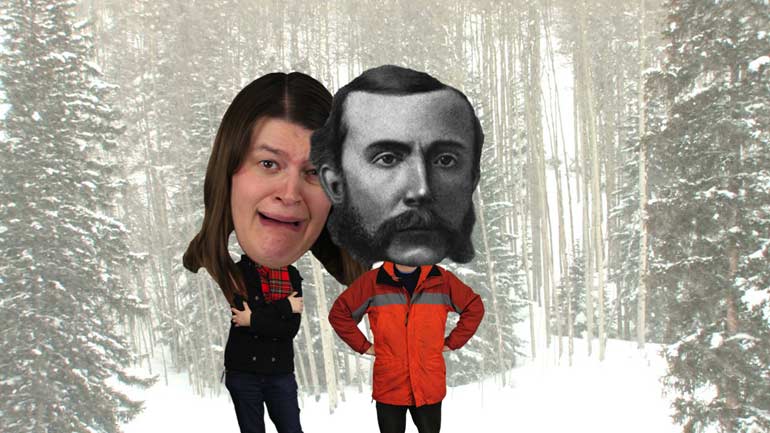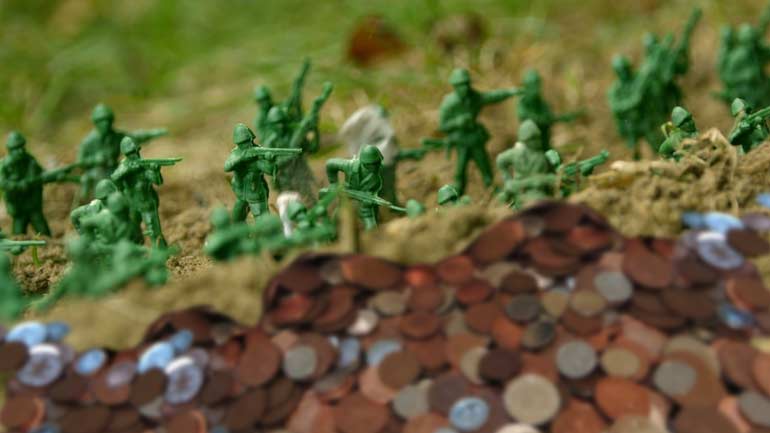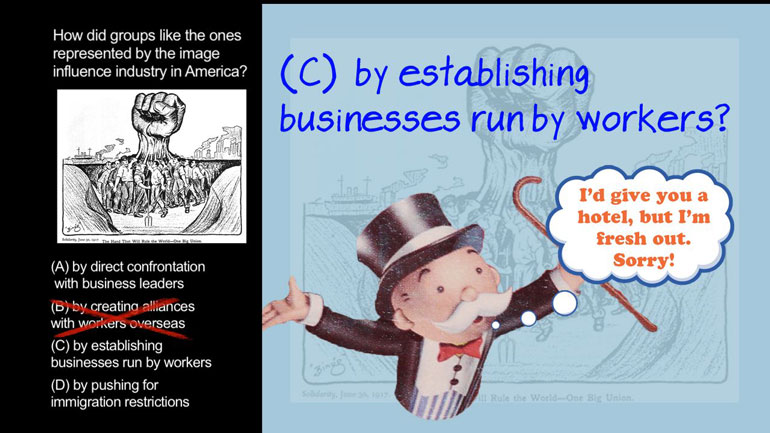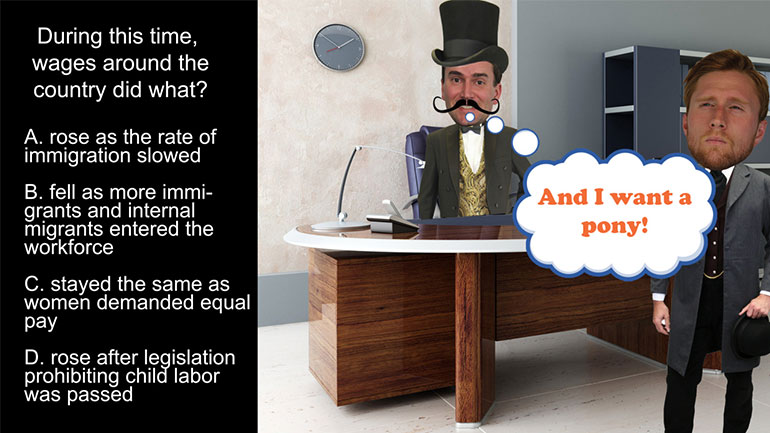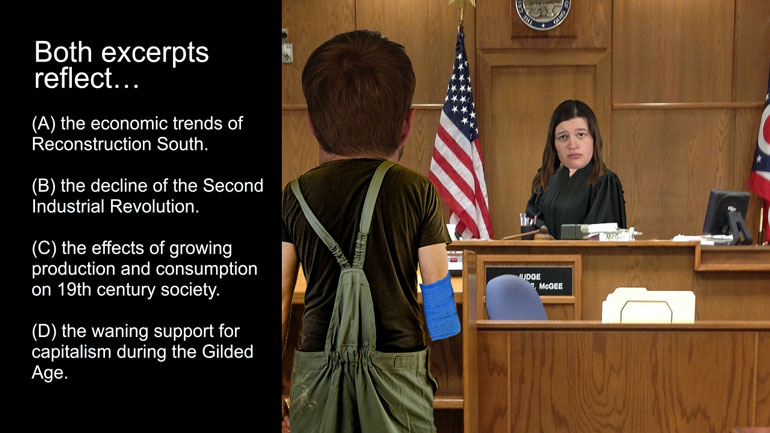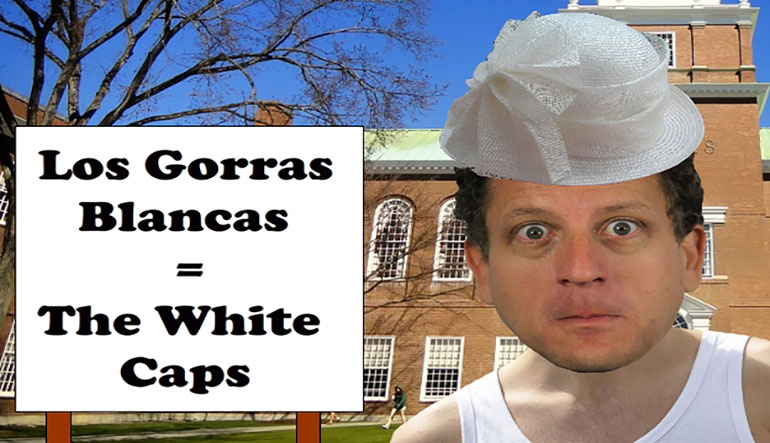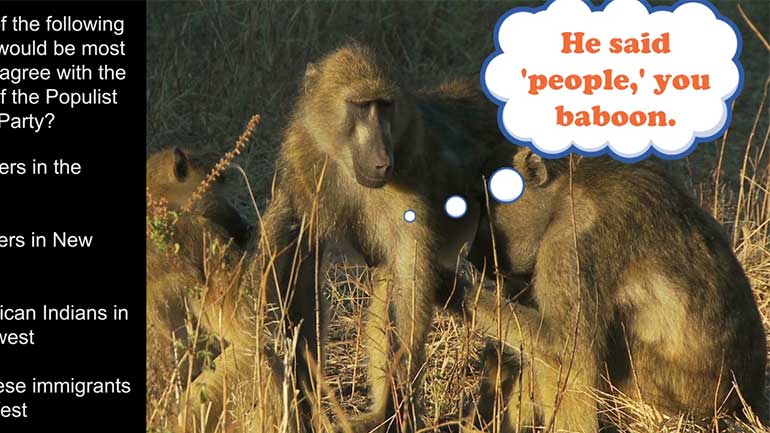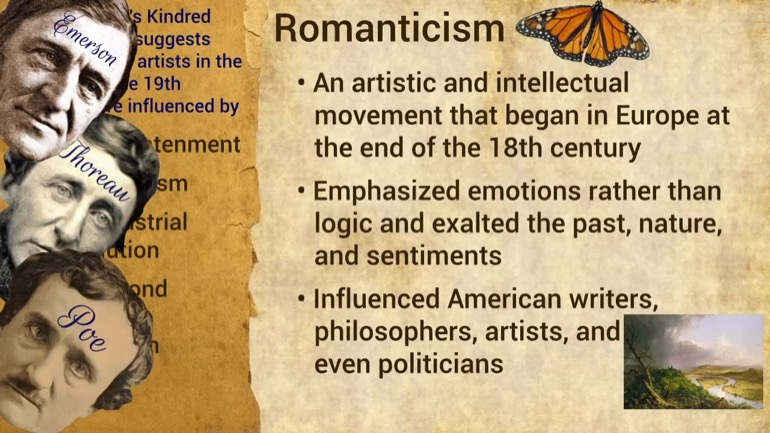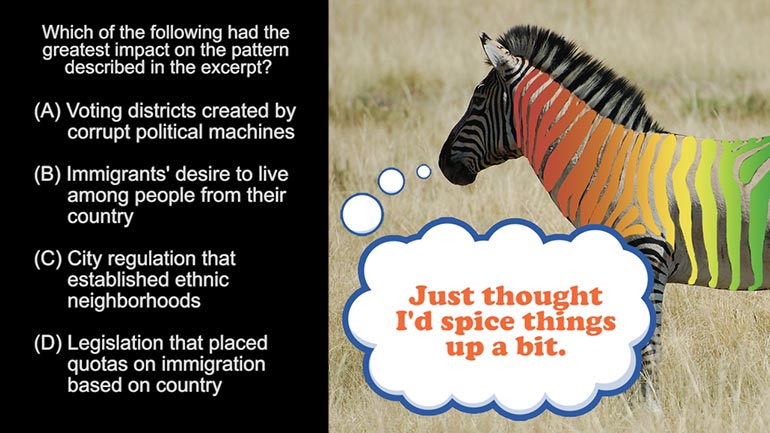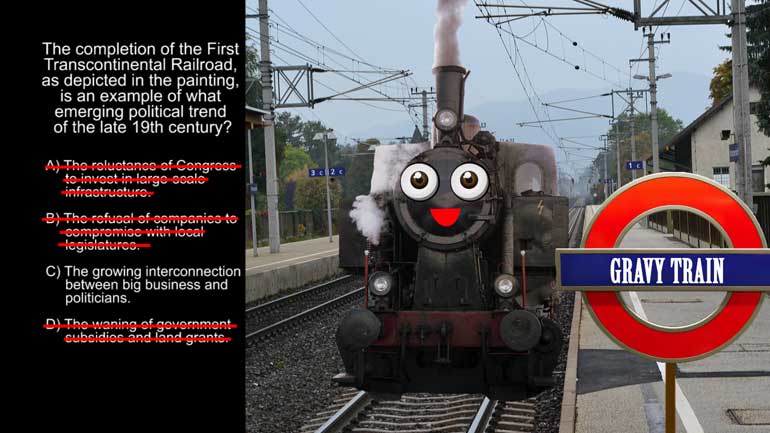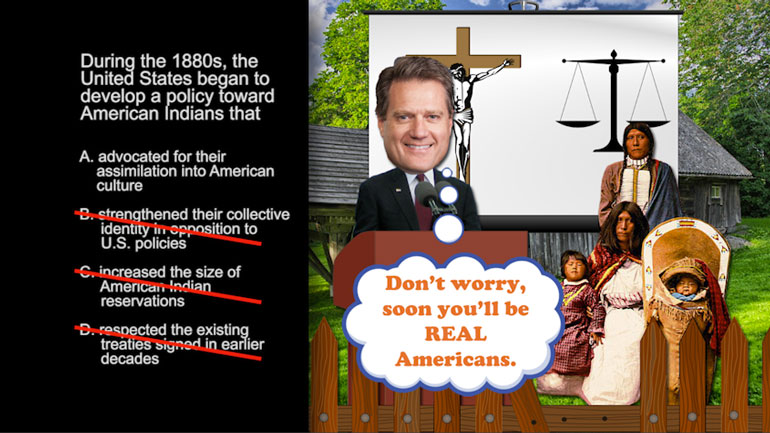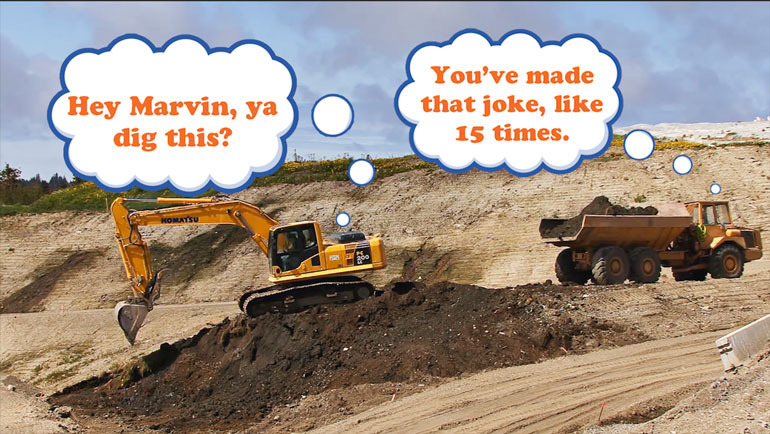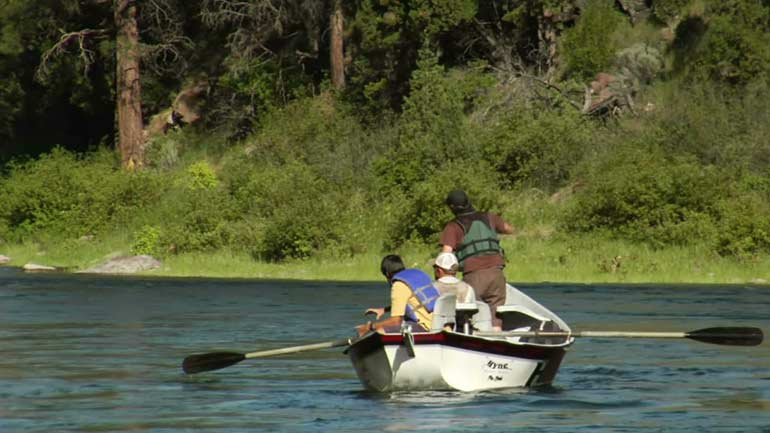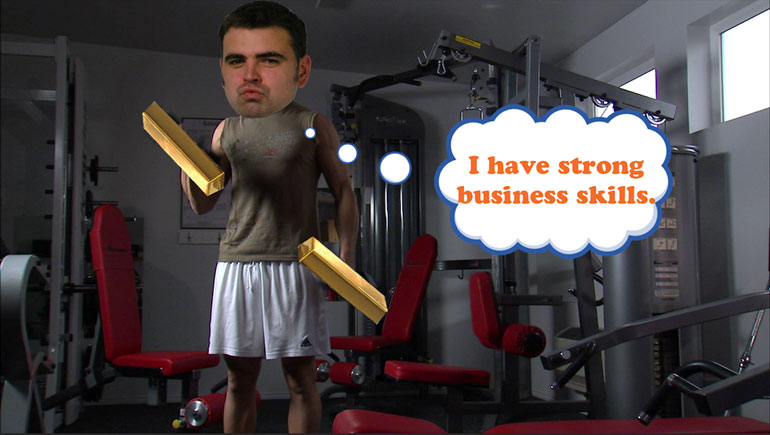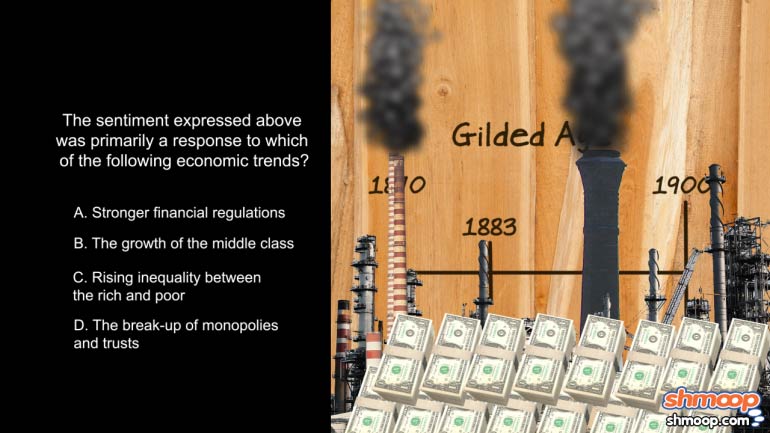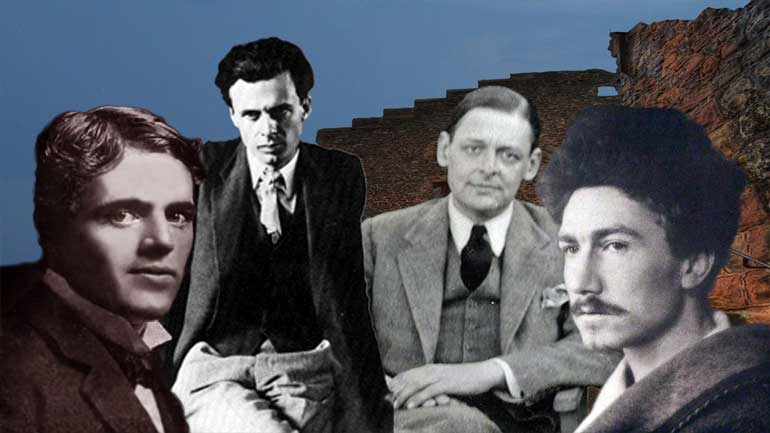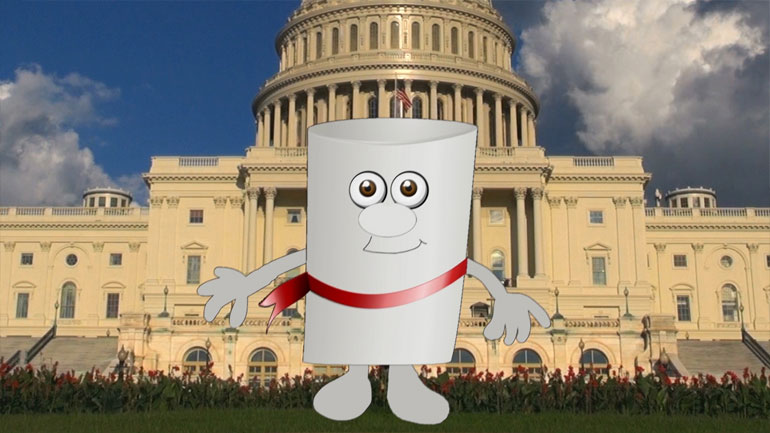ShmoopTube
Where Monty Python meets your 10th grade teacher.
Search Thousands of Shmoop Videos
Period 6: 1865 to 1898 Videos 26 videos
AP U.S. History Exam 2.28. What role did the government play in the growth of Veblen's "leisure class" after the Civil War?
AP U.S. History Exam 1.28. What made it possible for businesses to consolidate and grow in the way that the image represents?
AP U.S. History Exam 1.34. Which of the following shifts in American Society is reflected in the image?
AP U.S. History Exam 2.32 169 Views
Share It!
Description:
AP U.S. History Exam 2.32. The organization shown in the image worked to change the American economy by...what?
Transcript
- 00:00
[ musical flourish ]
- 00:03
And here's your Shmoop du jour, brought to you by the gold standard,
- 00:06
the latest trend in Andean fashion.
- 00:08
The Andes Mountains? Yeah, like that.
- 00:11
All right. The organization shown in the image worked
Full Transcript
- 00:13
to change the American economy by what?
- 00:15
And here are your potential answers.
- 00:17
[ mumbles ]
- 00:20
All right. Well, if that strapping young man in the image is any indication,
- 00:24
farming isn't just good for the land; it's good for the soul.
- 00:27
And also the return of high-waisted pants.
- 00:30
We won't go there.
- 00:31
All right, so let's see how the Grange movement planted the seeds of change
- 00:34
in its promotion of agriculture's, uh, healthy benefits.
- 00:38
Did the organization in the image work to change the American economy by A -
- 00:42
advocating the closing of the national bank?
- 00:45
Hmm. Well, abolishing the national bank was a
- 00:47
goal of the Farmers' Alliance, a group that was more focused
- 00:50
on economic policy than on the Grangers.
- 00:53
So we can take A off the payroll.
- 00:55
Did the Grangers attempt to reform the American economy by B -
- 00:58
setting a strict number of hours farmers could work each week?
- 01:03
Well, eight hour workdays eventually became an important issue
- 01:05
in the farmers' movement, but it was pushed more by the
- 01:08
Populists, not by the Grangers.
- 01:10
Looks like time's up for B.
- 01:12
Could the Grangers have attempted economic reform by C -
- 01:15
emphasizing the importance of silver over the gold standard?
- 01:19
Well, that's the Farmers' Alliance again, which favored the use of silver
- 01:22
over the gold standard. So if we can't cash in on C,
- 01:26
then that means the Grangers worked to change the American economy
- 01:29
by D - fighting for governmental control of railroads and grain warehouses.
- 01:35
The Grange movement's major goal was to return
- 01:38
railroads to government control and to allow for fair
- 01:41
pricing, since the fixed rates of railroad monopolies
- 01:44
placed a huge burden on farmers.
- 01:46
So D is the correct answer.
- 01:48
They may not seem super connected at first glance,
- 01:50
but agriculture really depended on the railroad system to, uh,
- 01:53
help keep things on track.
- 01:55
Choo choo.
- 01:57
[ train whistle ]
Related Videos
Ever heard of a "living document"? They eat and breathe just like the rest of us! They even walk around on their own two legs. Okay, fine—maybe t...
If the Puritans had gotten their way, religion would play a much larger role in lawmaking these days. Want to know more? Watch the video for all th...
What happened between the creation of the Articles of Confederation and the ratification of the current U.S. Constitution? This video analyzes the...
The Modernists thought the world had a lot of problems, and they were intent on fixing them—or at least talking about fixing them. Unfortunately,...
This video explains Federalism and the quest for a fair balance between state and national power. It covers the progression and compromises of Fede...
